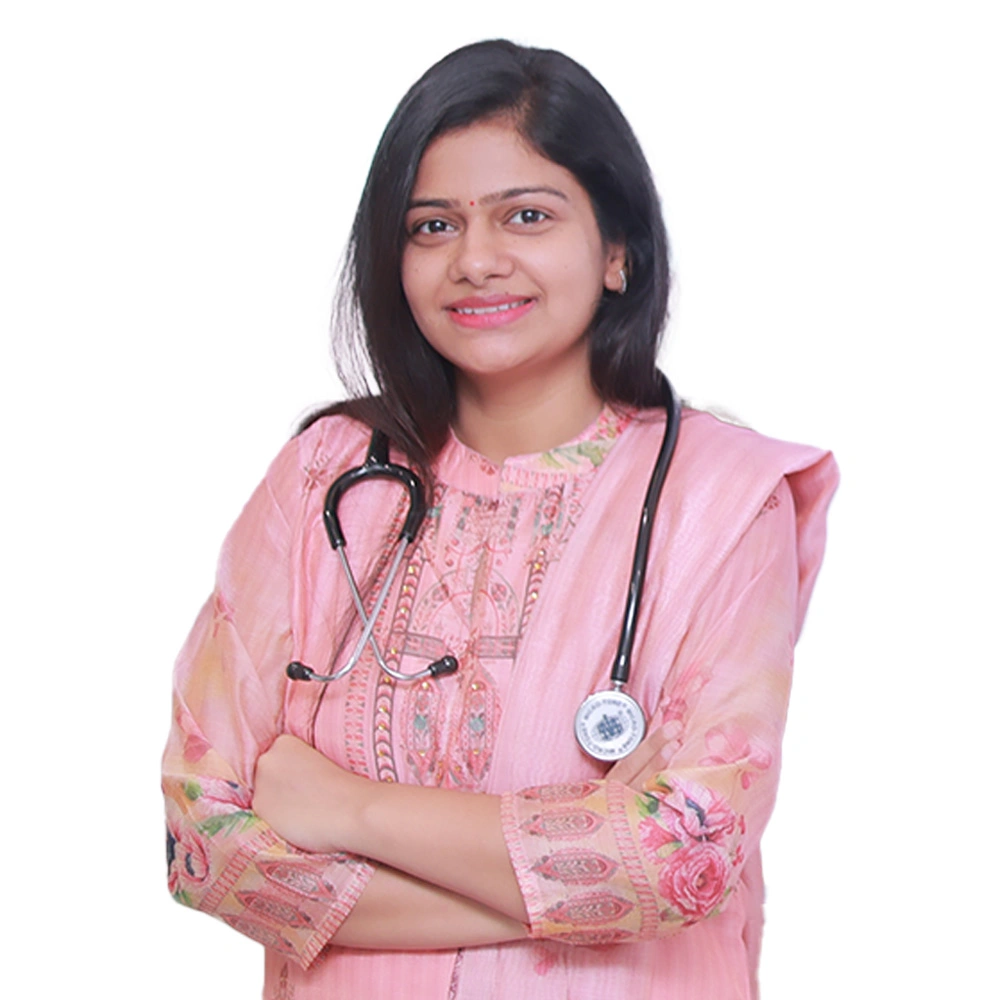
Myomectomy Surgery: Procedure, Types, Recovery & Fertility Impact

Table of Contents
- Key Takeaway:
- What is Myomectomy?
- Types of Myomectomy Surgery & Who They’re Best For
- Why is Myomectomy Surgery Recommended?
- Myomectomy Complications
- How to Prepare for Myomectomy Surgery?
- What Happens During the Myomectomy Procedure?
- Post-Surgery Precautions & Recovery
- How Myomectomy Affects Pregnancy & Fertility
- Myomectomy vs. Hysterectomy: What’s the Difference?
- Final Thoughts
- FAQs :
- Is a myomectomy like a C-section?
- Can you get pregnant with a myomectomy?
- Is pregnancy after Myomectomy high risk?
- Does myomectomy affect menstrual cycle?
- Is myomectomy surgery painful?
- How long to wait for IVF after myomectomy?
- Is myomectomy same as C-Section (Cesarean Section)?
- What to eat after myomectomy surgery?
- Can I get pregnant after myomectomy?
- Can I sleep on my side after myomectomy?
- Does myomectomy affect fertility?
- How long after myomectomy can I have intercourse?
Key Takeaway:
- A myomectomy is ideal for those wanting to keep their fertility options open.
- A hysterectomy is a permanent solution that eliminates fibroids completely.
- For women approaching menopause, a hysterectomy may sometimes be considered a more permanent solution.
- The right choice depends on your age, symptoms, and future pregnancy plans.
Must-Known Fact:
Between 25% and 50% of women with uterine fibroids have symptoms, such as pain, heavy periods, and other problems related to their reproductive health. Despite this, there is a lack of awareness about fibroids and the risks they pose.
Uterine fibroids are non-cancerous growths that develop in the tissues of the uterus. They are common health issues among women of reproductive age. However, despite being so widespread, most women overlook them until they start causing noticeable symptoms like heavy or irregular periods, pelvic pain, or fertility challenges. It is for the same reason that timely treatment is important to avoid complications and improve quality of life.
The most recommended treatment option is myomectomy. It is a surgery designed to remove fibroids while keeping the uterus intact. Unlike a hysterectomy, which generally involves the removal of the uterus, myomectomy allows women to preserve their fertility. It is why it is the most preferred choice for those who wish to conceive in the future.
In this blog, we’ll explore what myomectomy surgery involves, its different types, the recovery process, and how it impacts fertility.
What is Myomectomy?
Myomectomy is a surgical procedure performed when women suffering from uterine fibroids experience major symptoms like excessive bleeding, painful periods, pelvic pain, etc. There are many types of myomectomy, and the doctors recommend the surgery depending on a few factors, like the number of fibroids, their size, and their location.
Three major kinds of operative surgeries are:
- Abdominal Myomectomy
- Laparoscopic Myomectomy
- Hysteroscopic Myomectomy
- Vaginal Myomectomy
- Robotic Myomectomy
- Mini-laparotomy Myomectomy
Types of Myomectomy Surgery & Who They’re Best For
The following are the six types of myomectomy procedures, and for what type of cases they are best suited.
- Abdominal (Open) Myomectomy: This is the most common and traditional procedure in which a large incision is made in the lower abdomen to remove fibroids. Mostly, the recovery time is between 4-6 weeks post-surgery. This type of myomectomy surgery is recommended for patients who have large, multiple, or deeply embedded fibroids in the uterus. Even though the recovery time is more, it is apt for complex cases.
- Laparoscopic Myomectomy: The second on our list is laparoscopic myomectomy. In this minimally invasion surgery, small incisions are made and it involves the use of a camera and specialised instruments. Recovery time is shorter compared to open myomectomy, and takes about 2-4 weeks. Women generally experience less pain and scarring and it is best suited for people with fewer fibroids.
- Hysteroscopic Myomectomy: Next is a minimally invasive and highly effective procedure that is performed through the vagina and cervix. In this procedure no external incisions or scarring is needed. Post treatment the recovery takes less than a week making it ideal for fibroids located inside the uterine cavity. However, it needs to be treated as soon as diagnosed because it causes heavy bleeding and future issues with infertility. The good thing is that patients often experience immediate symptom relief.
- Vaginal Myomectomy: In this technique, fibroids are removed through the vaginal canal without making an incision in the abdomen. The recovery time is generally faster than open surgery. However, doctors do not recommend this procedure until and unless fibroids can be accessed through the vaginal route. Women do not face that much scarring and the hospital stay is shorter as well
- Robotic Myomectomy: This advanced, minimally invasive procedure is performed with robotic assistance. Here, they help the surgeon perform the surgery with more precision and control. Small incisions are used, similar to laparoscopy. The only different is that with the help of advanced robotic technology you get the benefit of better accuracy in complex cases. Recovery is usually within 2–3 weeks, and it is especially beneficial for women who want to preserve fertility with minimal surgical risk.
- Mini-laparotomy Myomectomy: Also called a “mini-open” procedure, this technique uses a smaller abdominal incision than a traditional open myomectomy. It combines the benefits of open surgery’s access with quicker recovery, usually 3–4 weeks. It is best for patients with moderately sized fibroids who may not be suitable for laparoscopy but still want a less invasive option.
Why is Myomectomy Surgery Recommended?
Doctors may recommend a myomectomy operation if fibroids lead to:
- Heavy menstrual bleeding that disrupts daily life
- Irregular periods that cause hormonal imbalances
- Pelvic pain or pressure
- Frequent urination due to fibroid pressure on the bladder
- Infertility or pregnancy complications caused by fibroids
Myomectomy Complications
Myomectomy is performed by qualified surgeons, and there are few chances of any major risks or complications. Especially with Hysteroscopic Myomectomy, there are no risks involved, as no incisions are involved.
Some risks and complications commonly associated with Abdominal and Laparoscopic Myomectomy are:
- Pain near the incision
- Abdomen tenderness
- High fever
- Excessive blood loss
- Scar tissue
- Damage to other organs
- Heavy vaginal bleeding
- Vaginal discharge
- Perforated uterus
- Scar tissue blocking the fallopian tubes
- Growth of new fibroids
If you take good care, there is nothing to worry about. The surgery will not affect your uterus or any other reproductive organs in the long run. You will be able to resume your normal sexual activities a few weeks after the surgery and may be able to conceive.
How to Prepare for Myomectomy Surgery?
Be it any type of myomectomy surgery, proper preparation is needed to ensure a smoother procedure and recovery. Here are some key points that should keep in mind:
- Avoid smoking or drinking alcohol for at least a 2-3 weeks before the scheduled surgery.
- Avoid eating or drinking water for 8-12 hours before the surgery.
- Consult with your doctor if any medication that you been taking needs to be stopped before the surgery.
- Get a maid or a family member to help you out post-surgery because you might need to take bed red for a couple of days as movement will be limited for the initial days.
What Happens During the Myomectomy Procedure?
Each type of myomectomy procedure has a different approach:
- Abdominal Myomectomy: The procedure is performed under general anaesthesia since a large incision is made in the abdomen area. Post the incision, the fibroids are removed and the uterus is stitched back. It is mostly recommended for women who have multiple large size fibroids, especially when fertility preservation is the end goal.
- Laparoscopic Myomectomy: In this procedure small incisions are made in contrast to abdominal myomectomy. A camera is used to located the fibroid. Once they are located, surgical instruments are used to cut them into smaller pieces before extracting them.
- Hysteroscopic Myomectomy: In this procedure a scope is inserted through the vagina. There are special tools used for removing fibroids from the uterine lining. No external cuts or stiches are done in this procedure which makes it a quick recovery procedure.
- Vaginal Myomectomy: This procedure is performed through the vaginal canal. The fibroids are accessed and removed without abdominal incisions. The recovery is usually quicker compared to abdominal or laparoscopic myomectomy.
- Robotic Myomectomy: This advanced technique is quite similar to laparoscopic surgery, however, this is performed using a robotic surgical system. Because of such advancement surgeons are able to perform the surgery with greater precision and flexibility. The incisions are small compared to the laparoscopic surgery, which makes the pain less and the recovery time is fast.
- Mini-laparotomy myomectomy: It is a procedure which uses smaller incisions in the abdominal areas as compared to open surgery. Larger fibroids are removed easily which may not the case suitable for laparoscopy. This procedure combines the benefits of open surgery and is minimally invasive.
Post-Surgery Precautions & Recovery
Recovery depends on the type of myomectomy surgery, but here are general guidelines:
- Rest and limited movement in the first few weeks
- Avoid lifting heavy objects for at least a month
- Drink plenty of water to prevent constipation
- Monitor for infection symptoms, such as fever or excessive pain
- Follow-up appointments to ensure proper healing
How Myomectomy Affects Pregnancy & Fertility
One of the biggest advantages of myomectomy surgery over a hysterectomy is that it preserves fertility. Here’s how it impacts pregnancy:
- The uterus remains intact, allowing for pregnancy
- Some women may need to wait 3-6 months before trying to conceive
- Scar tissue from open myomectomy surgery may increase the need for a C-section
- In some cases, fibroids may regrow, affecting future fertility
If you are planning pregnancy after a myomectomy procedure, you might also want to explore your options with IVF treatment.
Myomectomy vs. Hysterectomy: What’s the Difference?
| Factor | Myomectomy | Hysterectomy |
| Definition | Surgical removal of fibroids while preserving the uterus | Surgical removal of the entire uterus, sometimes with ovaries and fallopian tubes |
| Purpose | Treats fibroids while maintaining fertility | Treats severe fibroids, cancer, or uncontrollable bleeding |
| Impact on Pregnancy | Possible to get pregnant after surgery | Not possible, as the uterus is removed |
| Types of Surgery | Abdominal, Laparoscopic, Hysteroscopic | Partial, Total, Radical |
| Recovery Time | 2-6 weeks, depending on the method | 6-8 weeks for open surgery, shorter for minimally invasive methods |
| Menstrual Cycle | Continues as the uterus remains intact | Stops permanently since the uterus is removed |
| Fibroid Regrowth | Possible, as the uterus remains | No chance, since the uterus is removed |
Final Thoughts
A myomectomy operation offers hope to women seeking relief from fibroids while preserving their dreams of motherhood. Whether it is an open, laparoscopic, or hysteroscopic myomectomy, the right choice depends on your unique needs. Recovery may take time, but with the right post-surgery care and expert guidance, you can heal smoothly and move forward with confidence.
At Birla Fertility & IVF, we understand the emotional and physical journey of fibroid treatment. Our specialists are here to support you every step of the way, helping you choose the best approach for your health and fertility goals. If you are considering fibroid surgery, reach out to us—we are here to care for you.
FAQs :
Is a myomectomy like a C-section?
Yes, a Myomectomy is similar to a C-section; however, it is surgically performed, but the outcomes of both surgeries are different. A C-section is done to deliver a baby, whereas a Myomectomy helps remove uterine fibroids. Also, once a woman has been through this procedure, she will have to opt for a C-section in future pregnancies.
Can you get pregnant with a myomectomy?
Yes, it is possible to get pregnant after you have undergone a Myomectomy surgery. It is just a surgical process performed to remove uterine fibroids in women of reproductive age. Myomectomy is often confused with a hysterectomy, but they are different surgical procedures.
Is pregnancy after Myomectomy high risk?
No, pregnancy after Myomectomy is not high risk, but you will not be able to do a standard delivery after an Abdominal Myomectomy. You will have to opt for a C-section during childbirth. Some more lifestyle changes will also need to be implemented during the pregnancy.
Does myomectomy affect menstrual cycle?
Yes, it does affect menstrual cycle, but it is not negative in nature. Women see lighter and normal periods compared to when they had fibroids. Some temporary cycle issues can be seen during the recovery period.
Is myomectomy surgery painful?
Mild to moderate pain is common after surgery, but it is managed well with medication. Discomfort usually improves within a few days.
How long to wait for IVF after myomectomy?
Doctors usually recommend to wait for 4-6 months to try IVF after myomectomy surgery. The exact timeline can be different for each type of myomectomy.
Is myomectomy same as C-Section (Cesarean Section)?
No, they both are different from each other even though incisions are made in the abdomen area. C-section or cesarean section is used to deliver a baby, which mymectomy is done to remove fibroids.
What to eat after myomectomy surgery?
A balanced diet rich in protein, fiber, iron, and fluids helps healing and prevents constipation. Avoid processed and heavy foods during early recovery.
Can I get pregnant after myomectomy?
Yes, you can conceive naturally after myomectomy. In fact, there have been some cases in which the fertility is improved post removal of fibroids. It happens especially when the fibroids are affecting the uterus and making it difficult to conceive.
Can I sleep on my side after myomectomy?
Yes, you can sleep on your side if comfortable. Most patients are advised to avoid stomach sleeping in the initial weeks.
Does myomectomy affect fertility?
In many cases, removing fibroids improves fertility by restoring the normal shape of the uterus. The outcome depends on age and overall health.
How long after myomectomy can I have intercourse?
It is generally recommended to wait for 6-8 weeks before indulging in any kind of sexual activity. Mostly it is advised so that the recovery is done properly and there are no infections in the incision area.
Our Fertility Specialists
Related Blogs
To know more
Birla Fertility & IVF aims at transforming the future of fertility globally, through outstanding clinical outcomes, research, innovation and compassionate care.
Had an IVF Failure?
Talk to our fertility experts

 Our Centers
Our Centers
















